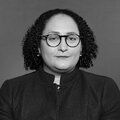Dark money is money that has been routed through an opaque nonprofit — thus concealing its true source from voters and investors alike. Since 2010, there has been over $600 million in dark money spent in federal elections though these shadowy 501(c)(4)s and 501(c)(6)s.
But on occasion the truth about the source of dark money comes out because of litigation. For example, two dark money groups settled with California for a $1 million fine after they hid the source of spending for two California ballot initiatives in 2012. As Pro Publica explained:
As part of the settlement, the Center to Protect Patient Rights conceded it was responsible for funneling $11 million through Americans for Responsible Leadership to a political committee spending money to fight a tax-hike measure and to support a proposition restricting unions’ political power. The Center to Protect Patient Rights also gave an additional $4 million to another dark money group, the American Future Fund, which gave the money to another political committee spending on the anti-union measure.
A similar story happened in Montana when a judge ordered a dark money group called Western Tradition Partnership (which later changed its name to American Tradition Partnership) to release its bank records. According to PBS’s Frontline: “The WTP bank records, which cover a period from March 2008 to December 2010, show that the group raised almost $1.1 million from other social welfare nonprofits, corporations, a political committee and individuals. It received $650,000 from the nonprofits, $70,000 from an Oklahoma businessman and his company and $50,000 from a Colorado homebuilder.”
And in 2013, the Comptroller of the State of New York sued Qualcomm in his capacity as a shareholder to get it to reveal its political expenditures. Qualcomm settled the suit and agreed to be transparent about its political spending. Some of the spending Qualcomm now reveals is money going to the U.S. Chamber of Commerce, another dark money conduit. In its latest report Qualcomm gave half a million to the Chamber—$262,500 for non-deductible (read political) purposes.
Bankruptcy Court is another place where the truth comes out. The public — or perhaps the subsection of the public that has a PACER account — can see which business plans went belly up, how much top lawyers charge by the hour, and who owes money to whom. Bankruptcy court is also one of the few places where the public can catch a glimpse of sources of dark money in politics.
That’s what reporter Lee Fang found when he examined the bankruptcy court filings of Corinthian Colleges, which had been a publicly-traded for-profit education company.
Corinthian Colleges got into deep trouble from the U.S. Department of Education and the Consumer Financial Protection Bureau, who both accuse the company of fraud in misrepresenting the job placements of its graduates. They have also been sued by the Attorney General of California for similar practices. And the GAO found disturbing patterns of malfeasance. The Securities and Exchange Commission (SEC) is also investigating whether Corinthian misled investors as well.
In the Delaware federal bankruptcy filings by Corinthian Colleges (Case 15–10952-KJC) the company included a “matrix of creditors” — in other words a list of people or entities to whom Corinthian owes money. They have to do this because these creditors stand to get a tiny cut of whatever money is left in Corinthian’s bankruptcy estate. Among the 1,753-page creditors’ list are two entities that should raise eyebrows. One is the American Legislative Exchange Council (also known as ALEC) and the other is Crossroads GPS.
ALEC, which is backed by the Koch brothers, is the nonprofit that has long worked on privatizing aspects of education which were previously run by government or nonprofits. For more on ALEC see here.
Meanwhile, Crossroads GPS, co-founded by Karl Rove, is a dark money group that has spent lavishly in the past few federal elections. In 2012, they spent over $176 million during the presidential election cycle according to Open Secrets and in the 2014 midterm they spent over $47 million. Crossroads GPS doesn’t reveal its donors. But thanks to bankruptcy, at least one mystery is solved as apparently Corinthian still owes Crossroads GPS money.
(Photo: TaxCredits.net)
The views expressed are the author’s own and not necessarily those of the Brennan Center for Justice
